Bathroom exhaust fans don’t remove steam as quickly as it is formed. However, running the fan for a certain amount of time after the shower is turned off or the bath drained should clear it completely. When steam lingers in the bathroom longer than this, something is wrong and needs to be addressed.

- Fan turned off too soon
- Bathroom door gap is insufficient
- Bathroom fan is not vented
- Fan is not powerful enough
- Fan and ducts are dirty
- Duct is too small
- Duct is too long
- Too many bends in the ductwork
1. Fan Is Turned off Too Soon
90% of problems with excess moisture in the bathroom are related to not running the bathroom fan long enough.
Some people think that it is enough to run the bathroom fan only when showering. However, as mentioned in the opening of this article, this is simply not true.
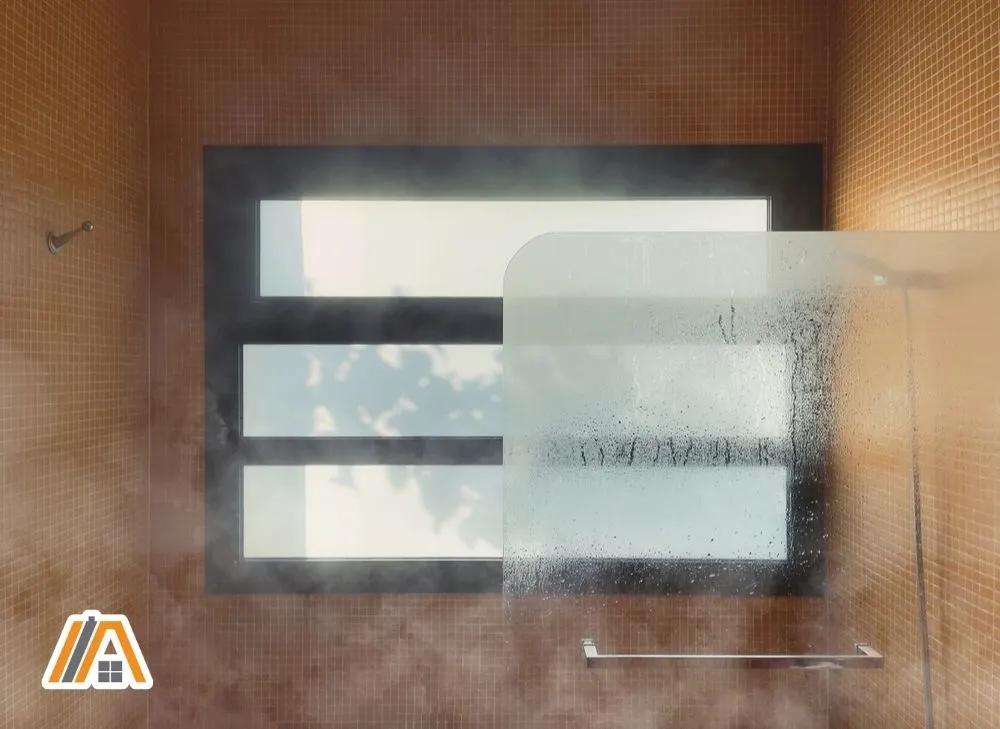
Fans Can’t Remove Steam as It Is Produced
If the fan were to be designed with enough power and capacity to remove steam at the average rate at which it is formed, it would be too powerful to be practical, and the size of the unit would likely be larger than you want suspended from the ceiling in what is typically a smaller room of the house.
To get more specific about the practicality of a fan this powerful, we need to remember that all the air that is removed by the fan must be replaced.
When such a large percentage of the room’s air is exhausted, the rate of replacement is either:
- going to be too slow, thus creating a vacuum that inhibits the function of the fan OR
- it is going to match the rate of exhaustion, creating a significant breeze in the bathroom. No one wants a breeze blowing past them while they are trying to take a warm shower. Wind chill and evaporative cooling will make it an unpleasantly cold experience.
There will be so much moisture in the air after showering that the fan must run at least 30 minutes after taking a shower.
Furthermore, the replacement air will likely be sourced indiscriminately since so much is needed. This means that you may end up with sewer smells in the bathroom as air is pulled up from the drains.
How Long to Leave the Fan Running
Since the bathroom fans don’t remove steam at the rate it is produced, the fan needs to run for a certain amount of time after the shower has been turned off or the bath drained.
This time has been set at 20 minutes by authorities, although I would probably recommend 30 minutes.
Take a look at the moisture level chart from my bathroom.
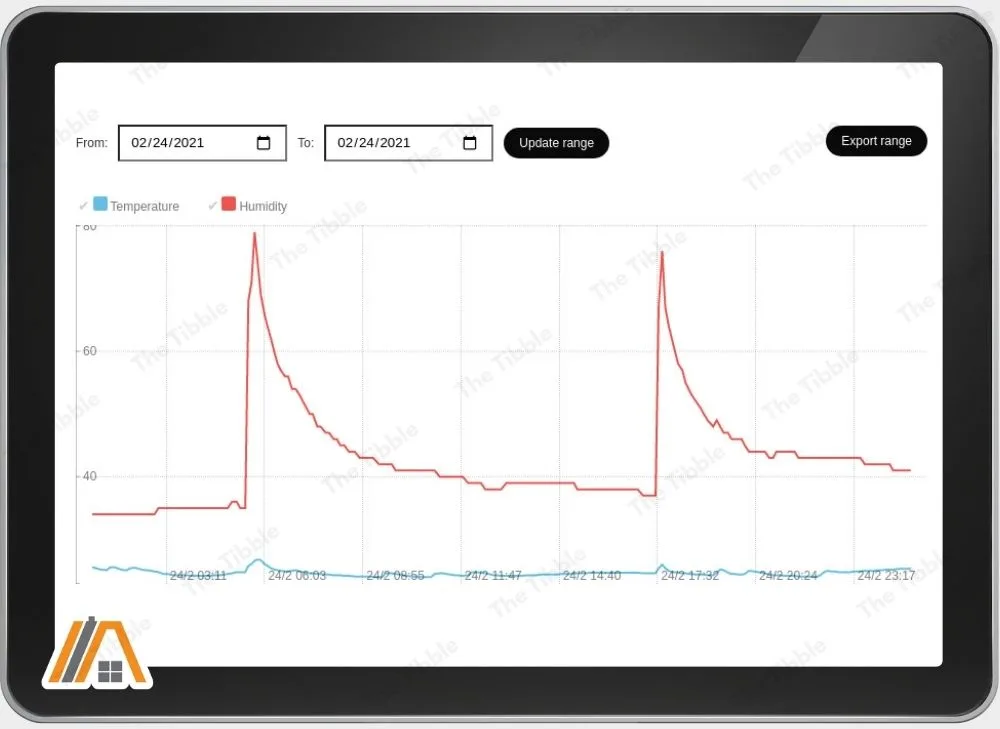
You can see that it takes more than an hour for the moisture level to drop back down to normal. This is because even when the overtly steamy air is removed, water is still slowly drying from all the surfaces by evaporating.
If you leave a wet towel to dry in the bathroom, the “recovery” time will be extended further.
Why This Is an Issue
If all you have to do is run the fan for an extra 20-30 minutes, why is this such a difficult undertaking for most users? There are several understandable reasons for this:
- The bathroom fan and light share a switch. Turning the light off when you leave the bathroom is automatic and makes energy-saving sense.
- Even with separate switches, the risk of forgetting and leaving the fan running for hours is real. This wastes energy and increases electricity costs. It can also do this indirectly by exhausting much of the conditioned air in the house, making your HVAC system work harder.
- Many people shower just before leaving the house. This means that you either turn the fan off right away or leave it running until you get home. With a nine-to-five job, the former option is the one you’re going to choose.
Solutions
If your issue is that you don’t like leaving the light on even though you aren’t likely to forget the fan on or you don’t need to leave after the shower, then the solution for you is to separate the light and fan switches.
For those who might forget or who are leaving the house before the fan has enough time to remove all the steam from the bathroom, you can look at two specialized types of exhaust fans:
- Humidity-sensing fans that will turn off automatically when the moisture levels drop below a preset level.
- FAN TIMER SWITCH Dual-tech in-wall humidity control switch that controls both bathroom fan and light simultaneously. Dual technology of passive infrared (PIR) motion sensor switch and humidity sensor...
- BATHROOM FAN OCCUPANCY DETECTOR Converts bathroom ventilation fan control wall switch with this smart humidity control switch, turning fan ON automatically when humidity exceeds preset level and...
- HUMIDITY SENSOR SWITCH features simple controls and operates in two modes: Occupancy Mode (auto on/off lights, auto on/off fan), and Vacancy Mode (manual on/ auto off lights, auto on/off fan)....
- MOTION SENSOR Two single pole switches to control bathroom light and fan separately; Compatible with LED light bulbs; Energy savings of up to 40% with motion sensing control; Complies with CA Title 24
Last update on 2024-03-27 / Affiliate links / Images from Amazon Product Advertising API
- Timer-switch bathroom fans that will turn off after a certain amount of time. You can program the time you prefer.
To learn more about how long to leave the bathroom fan on and how to make this practice easy, check out How Long Should Bathroom Fan Run After Shower
2. Bathroom Door Gap Is Not Sufficient
In the previous section, I spoke about air having to replace that which is exhausted by the fan in extreme situations.
However, the need for replacement air is present with any bathroom fan, it’s just that the quantities of air are smaller with correctly sized units.
One common source of replacement air is the hallway or room leading onto the bathroom. This air is pulled into the bathroom through the gap beneath the door.
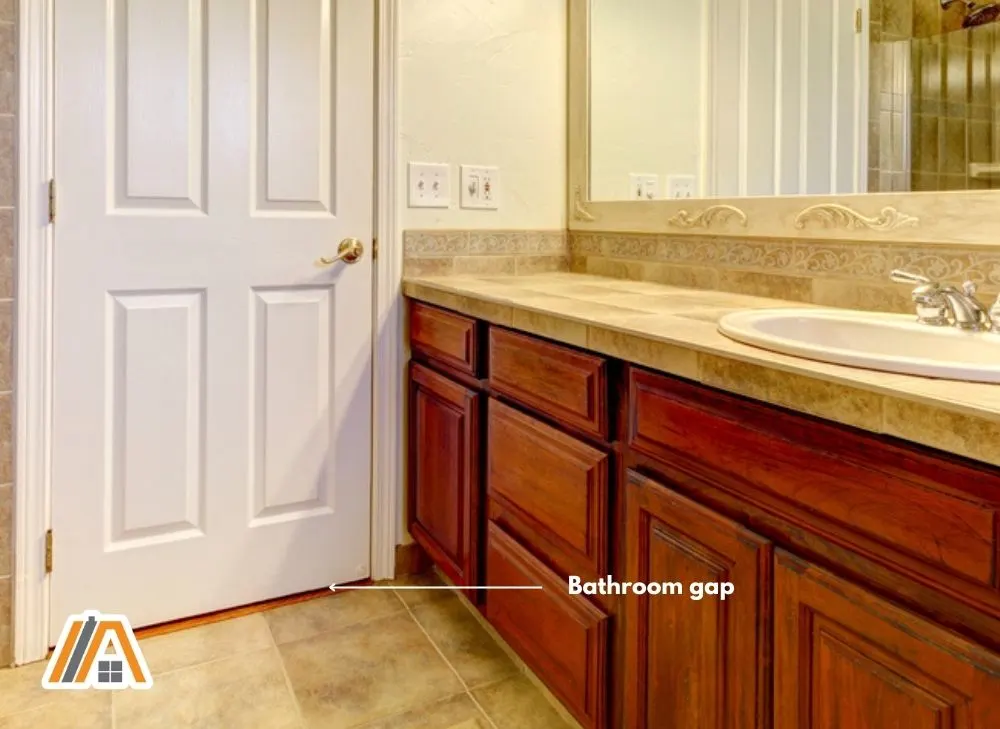
Gaps above and on the sides of the door also contribute, but the largest gap is typically along the bottom edge.
An easy way to test if the gap is sufficient is to close the door quickly. If there is air resistance when closing it, the gap is too small.
When the gaps are too small, running the fan with the door closed (which is the most common situation), will create a vacuum that inhibits optimal efficiency of the fan. In some cases, it can even be strong enough to pull sewer gas-containing air from the drains. Yuck!
There should be at least a 1/2″ or 12 mm gap between the finished floor and door.
Specifying the finished floor is important when you are sizing the door during a renovation or new construction.
Often doors are originally installed correctly. However, during renovations, the floor height can rise. The extra height can be because of underfloor heating, thicker tiles, or just the fact that new tiles were laid over the old ones.
It is actually quite common for contractors to forget to cut the door after work in the bathroom is completed.
If the door sticks with the new height, they are likely to just sand it down enough to get it closing smoothly. This is typically not enough to provide the optimal gap.
How to Increase the Door Gap
The bottom edge of most doors can be safely cut to have a 1/2″ space between the floor and the door.
I recommend using a jigsaw with a clean wood blade for this task. Jigsaw blades are relatively inexpensive compared to circular saw blades.
If you are looking to buy a jigsaw, it’s ok to buy a cheaper one, just get quality blades. The blade is what makes the biggest difference.
If you don’t have any tools at home here is everything you need to cut the door by 1/2″
| Tool | View on Amazon |
| Jigsaw | View |
| Blade set | View |
| Clamps to hold the guide | View |
| Piece of straight wood for a guide |
If for some reason it is not possible to cut the bottom of the door to increase the gap, there is another solution.
You could cut a hole into the door and install a vent instead. This will allow for plenty of air movement for even larger capacity exhaust fans.
Make sure you get a vent grille that matches your door and comes with two sides. A plain white door vent will fit most doors.
Last update on 2024-03-27 / Affiliate links / Images from Amazon Product Advertising API
Alternatively, you can replace the door with one that is sized correctly or with one that has a built-in vent.
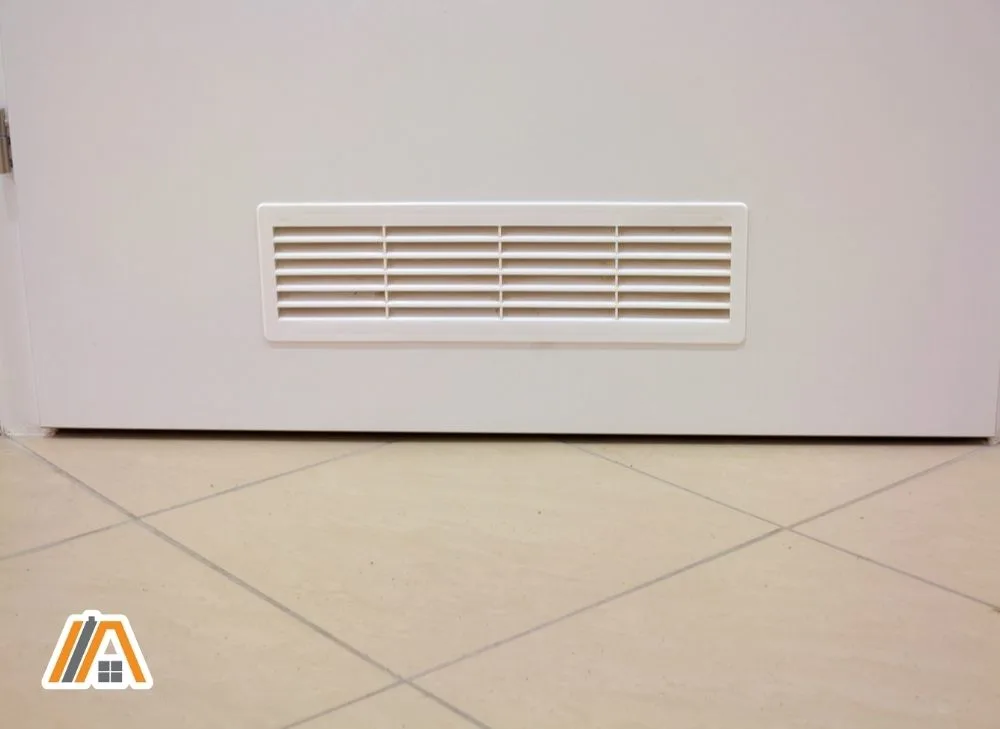
3. Bathroom Fan Is Not Vented
Bathrooms are required by code to have a minimum level of ventilation. Most openable windows meet this requirement—as long as you open them while showering and leave them open until the steam dissipates.
Since this is not always practical and not all bathrooms have windows, many people turn to bathroom fans to provide this ventilation.
However, they can only do so if the air is expelled from the house through a system of ducts connected to the fan.
Installing a bathroom fan without a duct attached simply pulls the air into the space behind the wall or ceiling.
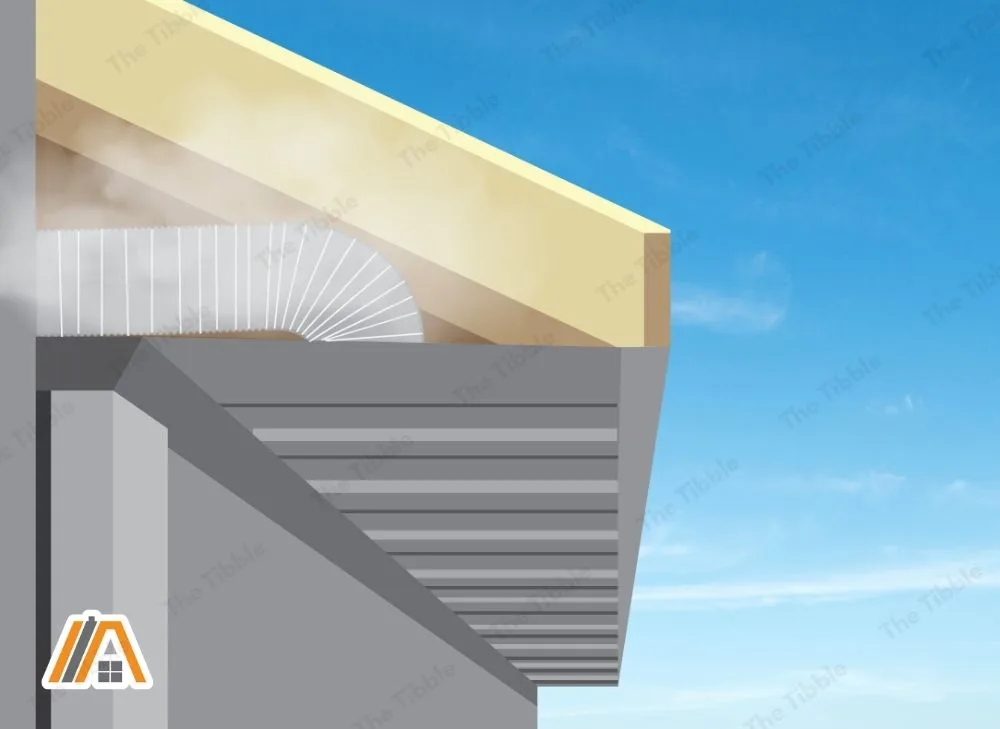
This has a whole host of repercussions but for the purposes of this article, we will just look at the fact that once the fan is off, all that steam can just move right back into the bathroom.
While they seem like a solution to avoiding holes in the house and long runs of ducts, ductless bathroom fans are not an option.
They pull the air through carbon filters before releasing it again into the bathroom. They do nothing to remove the steam, despite some false claims in advertisements.
They are designed to remove odors in powder room-style bathrooms or pantries.
If your fan is ductless, this is the reason you are struggling with steam. The solution would be to lay down ducting (with fans that were designed to be vented) or to replace the ductless fan with a ducted model.
How To Check If The Bathroom Fan is Vented
You can simply remove the external grille and see if there is a duct connected.
Determining if the fan is designed to be ductless is also easily done.
A ductless bathroom fans will have a replaceable activated carbon filter. This is usually accessed by removing the plastic grille. If you find a filter inside the fan, then it is most likely a ductless bathroom fan.
The good news is that you have found the source of poor ventilation.
4. Bathroom Fan Not Powerful Enough
Fans have to be sized correctly in order to function optimally. We’ve already spoken about what happens when fans are oversized, but being undersized is also a problem.
The capacity of a fan is measured in cubic feet per minute (CFM). It represents how many cubic feet of air is removed by the fan in a minute.
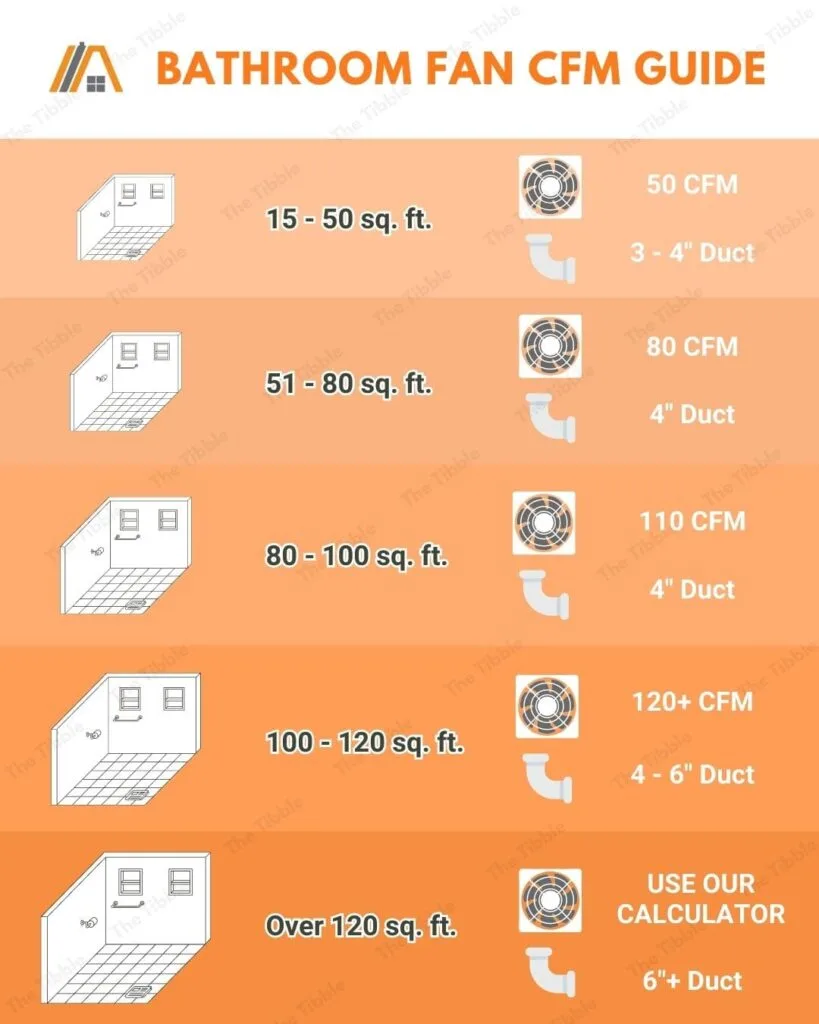
An underpowered fan removes too little air per minute.
After you are done in the shower, there is such a buildup of steam that it takes a much longer time to clear the air than it should and it appears as if the fan is not working, even if you leave it running for the extra 20-30 minutes.
Another issue here is that the fan motor is overwhelmed by having to work so hard and it starts to fail sooner than it should. After a year or two, you end up with a fan that is functioning as if it is at the end of its life.
Sizing a bathroom fan is not difficult. It’s based on the size of your room and the required rate of eight air changes per hour as stipulated by the Home Ventilating Institute.
I have made a very simple CFM calculator, which will tell you the minimal CFM your bathroom fan should have.
Plug the dimensions of your bathroom into the calculator and compare the generated CFM to the CFM of your existing fan. You can find this on the packaging, in the manual, or online using the model number.
You should be able to remove the cover from your exhaust fan to reveal the model number. The cover is usually clipped on and can be removed by simply pulling down.
If you are unable to find the model number and the fan is very old, there is a good chance that it needs to be replaced anyway.
When your fan is not strong enough for your bathroom size and usage, then you will suffer from foggy mirrors even when the fan is running.
5. The Bathroom Fan Is Dirty
A dirty bathroom fan is going to leave a bathroom steamy longer than it should for a number of reasons.
- The dirt clogs up the ducts, limiting the air that can pass through it and also causing the airflow to be more turbulent, which slows it down.
- Dust can build up on the fan blades as well, which makes them harder to move. The movement of the fan blades is what pulls the air into the ducts and forces it out of the house.
- A fan that is trying to exhaust air with dirty blades and a clogged duct is working hard—much harder than it is designed to. We’ve already discussed what happens when a motor is overworked.
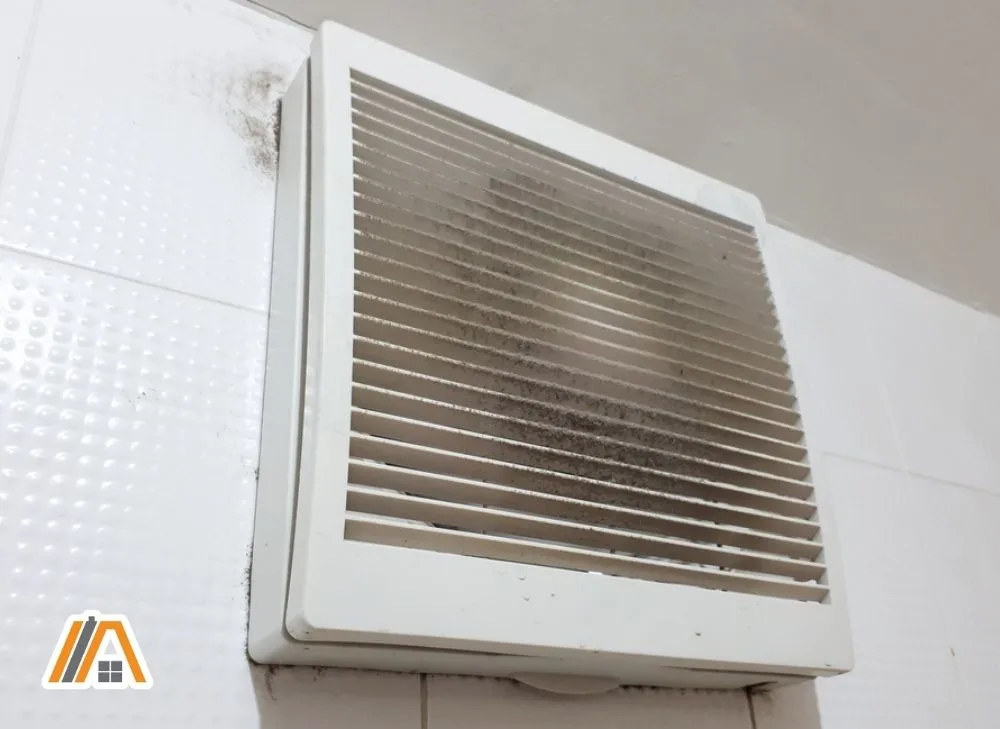
To be honest, the fan would have to be extremely dirty for it to affect air flow enough to cause it to not function properly.
However, people don’t often clean their bathroom ventilation systems beyond giving the front of the grille a wipe down.
We all know the fan and ducts need regular cleaning, but it’s one of those jobs that we always put off until it’s convenient, except it’s never convenient.
If your bathroom fan is not doing much with the steam from your shower, it might be time to prioritize the job.
6. Duct Is Too Small
The diameter of the ductwork influences the fan’s efficiency.
There are two main types of pressure acting on the air traveling through a duct. Velocity pressure and static pressure.
Velocity pressure is what drives the air forward. Static pressure is better known as friction. It’s the force that opposes the flow of air. It is exerted by the walls of the ducts.
Being “too narrow” depends on how much air is entering the duct at a time, which is determined by the fan’s capacity or CFM.
When ducts are relatively narrow (meaning that they are narrow in relation to the fan’s CFM), more of the air entering the ducts is pressed against the inner surface, increasing the static pressure in relation to the velocity pressure.
In other words, the air slows down and it takes longer for the bathroom to be cleared of steam.
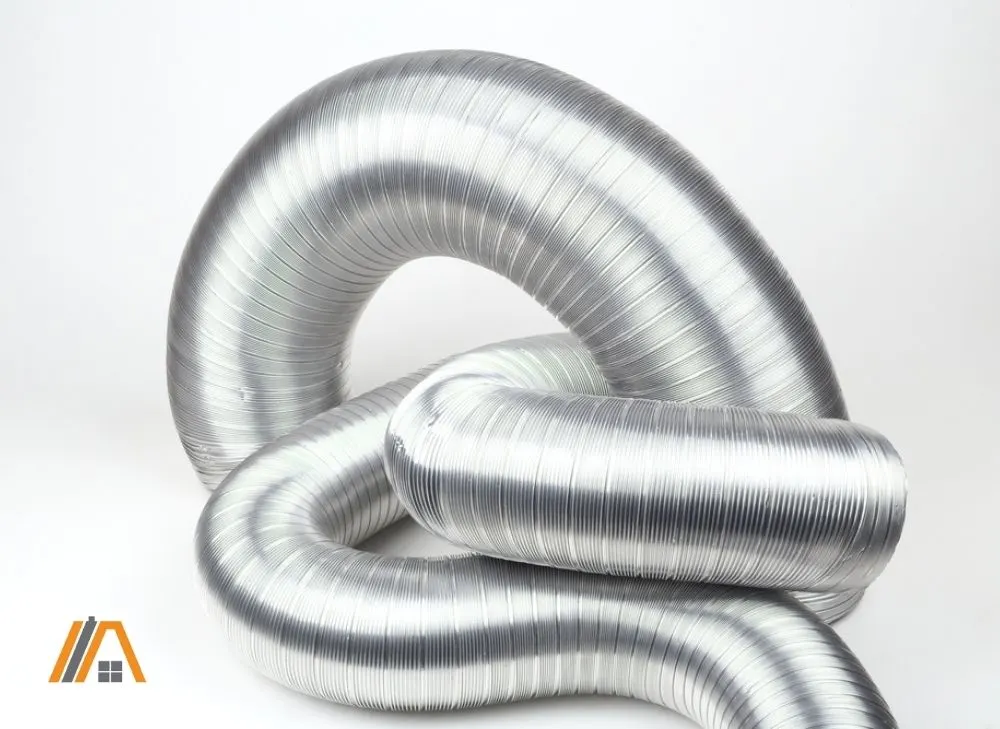
7. Duct Is Too Long
Even if the ducts are an appropriate diameter for the fan’s capacity, if the duct run it too long, then the fan will still struggle to exhaust all the steamy air from the bathroom.
This is simply because the air is exposed to static pressure in the duct for longer than the velocity pressure can drive it forward.
Some air makes it to the terminal vent, but a good portion does not.
Even when you run the fan for 20-30 minutes after the shower is turned off and the bath is drained, the amount of time it takes to get the air out of the ducts means that it won’t all be out of the ducts when the fan is turned off.
This steamy air can then make its way back into the bathroom.
When it comes to allowable length, the International Residential Code (IRC) lays out the maximum length that a duct run can be depending on if the ducts are flexible or rigid.
8. Too Many Bends in the Ductwork
When the duct bends too often, the air loses velocity much faster than if that same length of ducting was laid out straight.
This is because the air is not just slowed by the static pressure from the sides of the ducts. It is also slowed by each bend.
The air hits the turn and has to exert energy to change direction, resulting in less forward momentum.
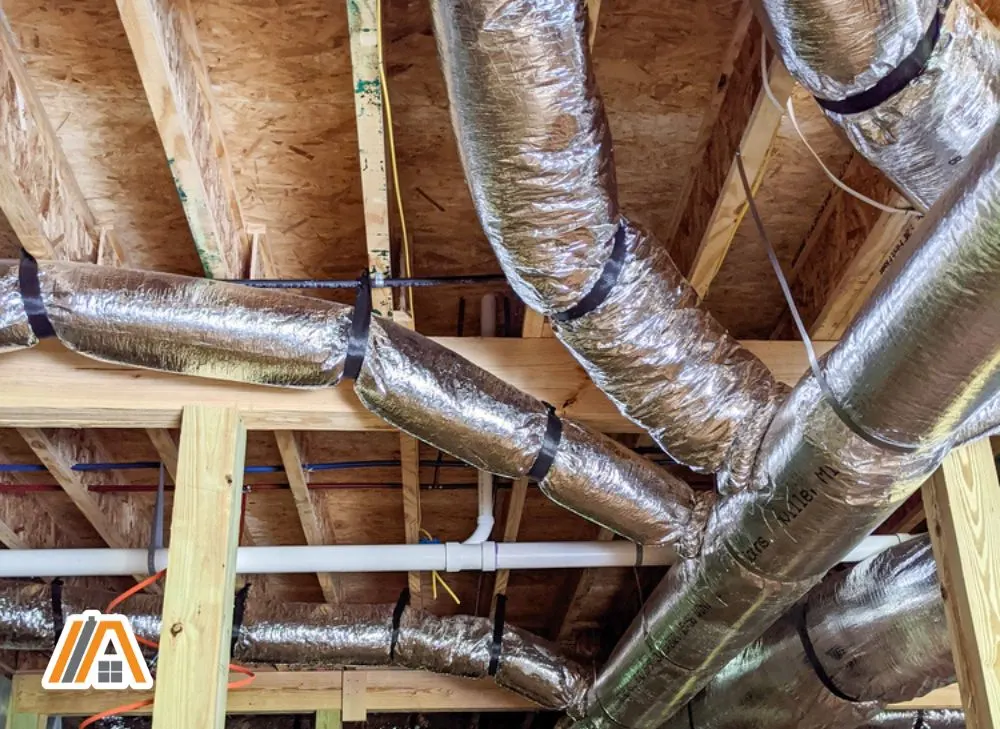
The air again takes too long to get through the ducts meaning that it takes longer to expel all the steam.
Because of this fact, you have to reduce the length of the duct run by a foot for each bend/elbow you include.
Bathroom Fan Placement
The placement of the bathroom fan is important to the optimal functioning of the bathroom fan. However, unideal placement of the fan is not going to inhibit the fan’s function to the point at which it seems as if the steam is not being removed from the bathroom.


